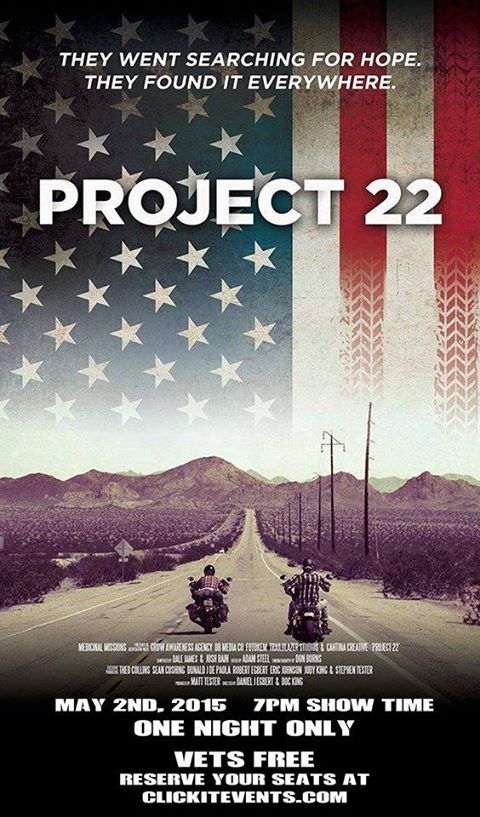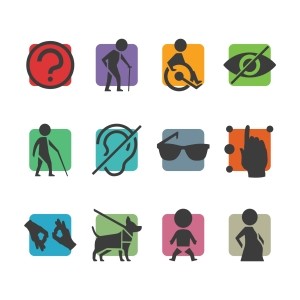
The cost will be $12.50 for civilians and FREE for Veterans.
VETERANS STILL MUST CLICK ON THE LINK AND RESERVE THEIR TICKETS!
Tickets will go fast and this will be a one night only show so make sure you get yours today! Just go to www.clickitevents.com to purchase yours!
For those riding, there will be a link up at Harley-Davidson of Frederick and then will have an after party at Hardtimes Cafe And Cue.
Saturday, May 2
at 7:00pm
MDL Holiday Cinemas official
100 Baughmans Ln, Frederick, Maryland 21702
For more information on this event please visit the Website or Facebook Page
Click here to view the trailers!
If you can’t make it to the event but still want to support the cause you can Donate Here!
ALL PROCEEDS WILL BENEFIT 22 NEEDS A FACE
The making of Project 22
Project 22 was a 22 day, 6,500 mile motorcycle awareness campaign from San Francisco to New York City to raise awareness of the high rate of suicides within the Veteran community. As we traveled across the country, we spoke with many Veterans who had contemplated or attempted suicide and asked them for their stories; what led them to it and what brought them out of it. The responses regarding the challenges were in remarkable unison although the hope they found came in many different forms. We were able to explore the therapeutic potential behind sailing, pottery, education, activism, family, service dogs, painting and more.
We also spoke with leading researchers of Traumatic Brain Injury and Post Traumatic Stress, mental health clinicians and educators, as well as, leading experts in warrior culture and combat stress. Coupled with the insightful and potentially life changing information we captured in interviews, we filmed the motorcycle awareness campaign, including camping, several organized rides and our final ride being escorted into World Trade Center by the Port Authority Police Department. We gathered incredible footage and news coverage in multiple cities, including Pittsburgh and New York.
Project 22 was entirely crowd-funded via an IndieGoGo campaign and private donations. In addition, the crew was offered food, lodging and assistance wherever we rode, helping keep production costs low. Project 22 is fiscally sponsored by From The Heart Productions, a 501(c)3 non-profit organization, while Medicinal Missions applies for independent non-profit status. All donations are tax-deductible and are made payable to From The Heart Productions via the PayPal link on our website or by check to: From The Heart Productions 1455 Mandalay Beach Road Oxnard, CA 93035-2845
From The Heart has been successfully funding films since inception in 1993 under the 501(c)3 Internal Revenue Code of 1954. Also classified as a public charity under section 509 (a) (2) of the Code. Monetary donations to the Fiscal Sponsorship Program qualify as charitable contributions under the U.S. Tax Code for 95 444 5418.
Current Campaign
Statistically, 22 Veterans of the US Military will take their own lives and 22 families will lose loved ones today due to combat-related stresses and injuries. Project 22 follows two combat-wounded Veterans on a mission to find hope. Riding motorcycles from San Francisco to New York, Daniel and Doc speak with Veterans about post-war challenges that lead to suicide and the healing Veterans are finding in alternative forms of therapy such as sailing, pottery, education, service dogs and more.
During the 6,500 mile journey, our riders interview leading researchers, mental health clinicians and educators who specialize in Traumatic Brain Injury and Post Traumatic Stress, as well as a leading expert in Warrior Culture and Combat Stress. Asking hard hitting questions and opening up about their own struggles, Daniel and Doc will stop at nothing to reach tomorrow’s twenty-two.
Mission Statement
To raise awareness of Veteran suicides and to educate on methods to overcome symptoms of Post Traumatic Stress (PTS) and Traumatic Brain Injury (TBI) in order to prevent Veteran suicides and make alternative therapies available to Veterans with PTS and TBI.

